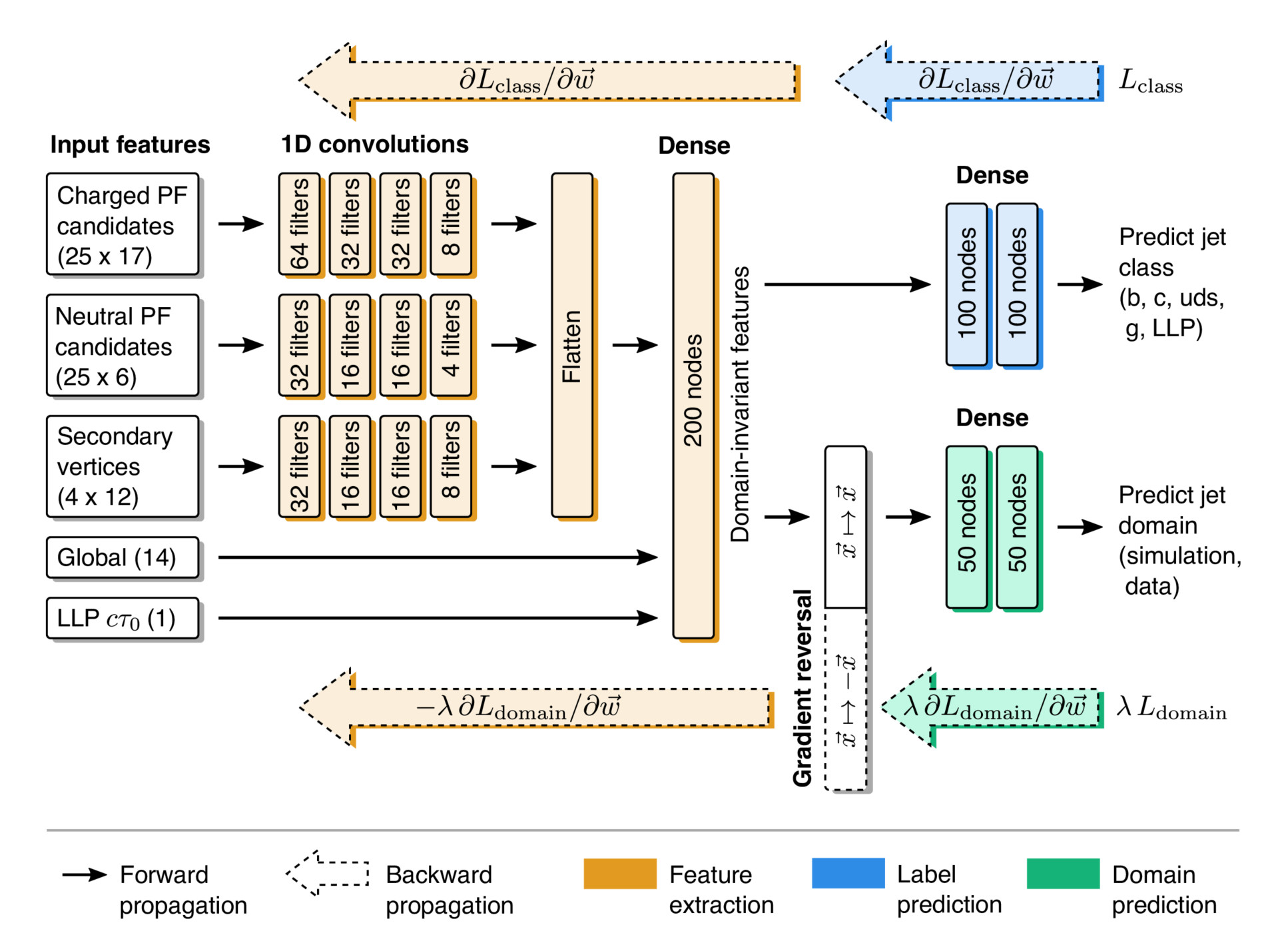At the energy frontier
Within the CMS experiment, the use of machine-learning technologies was instrumental in the discovery of the Higgs boson.
New theories that beyond the standard model of particle physics aim to answer questions such as: what is the nature of Dark Matter, and why is the Universe predominantly composed of matter rather than antimatter? If realised in nature, these theories may manifest themselves via new "exotic" particles produced in the LHC proton-proton collisions and detected by the LHC experiments such as CMS and LHCb.
Recently, searches for new "long-lived" particles that exist for more than a fleeting moment in time before decaying to ordinary particles are receiving a lot of interest within CMS and beyond. Depending on the theory parameters, the long-lived particle may travel undetected through the detector systems, which results in the rather atypical experimental signature of the ordinary "daughter" particles apparently appearing from out of nowhere. The Imperial HEP group has developed a deep artificial neural network to identify these odd-looking events in the CMS experiment by exploiting their unusual experimental signatures.
The deep neural network learns from events that are obtained from Monte Carlo simulations of the proton-proton collisions occurring in the CMS detector. While the Monte Carlo simulation is very sophisticated, it does not reproduce all the finer details of the real collision data. A novel aspect of this study is the use of real data from proton-proton collisions to fine tune the training of the neural network. A technique known as "domain adaptation" is used to ensure that the discriminating information provided by the neural network agrees to a high level of accuracy for both real and simulated collision data. The ability of machine-learned algorithms to demonstrate robustness and reliability when applied to data is a crucial trait when searching for rare new-physics processes. This algorithm is an example of the new tools being deployed by CMS and other collaborations in their search for beyond-the-standard-model physics.

At the intensity frontier
Within the area of neutrino physics, there are a wide range of applications of machine learning that we are working on. On the Deep Underground Neutrino Experiment we are involved in event reconstruction in liquid argon using graph neural networks, convolutional neural networks and detector originating adversarial examples. On Hyper-Kamiokande we are using semantic segmentation with convolutional neural networks for the location calibration of the PMTs. Throughout the long baseline neutrino oscillation group (comprising T2K, HK and DUNE) we use various different machine learning techniques to analyse neutrino oscillation data in our search for CP-violation in the neutrino sector.